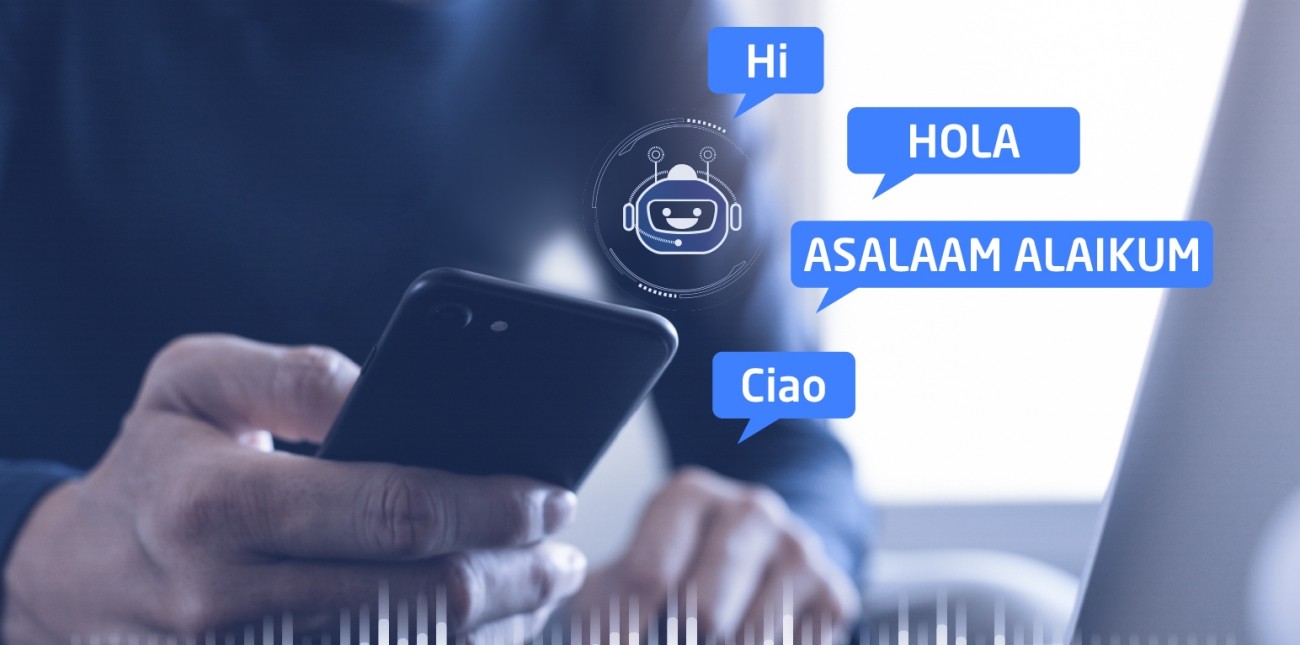
In this digital time where almost every need is met with a tap, customers expect to find answers regarding the services and products they are interested in a short time. The later the answers, the more frustrated they will get. Customers are most likely to shift their loyalties if they feel a business isn’t providing them with swift responses. This is where chatbots come into play. But there is an aspect that businesses disregard when integrating chatbots- multilingualism. Customers need multilingual chatbots that speak their vernacular.
Before we dive into details about multilingual chatbots, let’s talk more about chatbots in general.
What Is a Chatbot?
In simple words, a chatbot is a computer program or an artificial intelligence application designed to initiate spoken or written human-like conversations.
The need for chatbots emerged due to customers demanding to get instant answers and solutions when a customer service agent isn’t available to assist them. Chatbots are designed to provide 24/7 support.
Conventional or rule-based chatbots are used in simple situations to answer standardised, straightforward questions. They basically work by following a series of defined rules to identify keywords within questions and give fixed answers based on that.
Conventional chatbots don’t learn from interactions. Any changes in the way the questions are asked or what we can explain as a deviation from the predefined rules will lead the chatbot to reach its limits and fail to give the desired answer. Hence, rule-based chatbots aren’t successful in achieving the “human-like” part.
With customers reporting that traditional chatbots don’t provide a satisfying experience, businesses had to elevate their game and resort to the newcomer taking the tech world by storm, artificial intelligence (AI).
A conversational AI chatbot has the ability to learn from previous experiences and give different answers to changing situations without being directly programmed. Conversational AI chatbots allow customers to use their own terms and form questions in different ways. They understand customers’ intent and offer a high-level human-like interaction. Conversational AI also paved the way for businesses to speak their customers’ languages by enabling them to develop multilingual chatbots.
What Are Multilingual Chatbots?
A multilingual chatbot is an intelligent virtual assistant (IVA) powered by artificial intelligence. It can converse with users using different languages other than English, which is considered the default business vernacular. It goes beyond translation; multilingual chatbots are interactive software that accounts for cultural aspects of languages and is capable of understanding dialect nuances.
But how do multilingual chatbots communicate in different languages in the first place?
How Do Multilingual Chatbots Work?
Besides translation work, multilingual chatbots use natural language processing (NLP), a component of artificial intelligence that bridges gaps in machine and human interactions. It enables the chatbot to understand the voice and text inputs we make in our natural language. This includes understanding slang, abbreviations, different grammatical patterns, context, cultural-related terms, etc. It understands the intent behind an input and responds just like a human would.
Multilingual chatbots are trained to use the languages needed to achieve business goals and reach a target audience. The language the chatbot speaks can be chosen by the user or identified based on their browser settings. Using language detection tools is another way to set the multilingual chatbot language. The user initiates interaction, and the tool counts how many times words belonging to a specific language are used per sentence to determine the language based on the usage percentage.
Now that we have a good understanding of how do multilingual chatbots work, let’s find out more about how they benefit businesses.
4 Ways Multilingual Chatbots Will Benefit a Business
Multilingual chatbots transform the way businesses communicate with their customers and potential prospects, opening new gates to success by eliminating the language barrier. Here are 4 benefits of multilingual chatbots:
Reach a Larger Audience Base
This is the most significant benefit of multilingual chatbots. Yes, English is seen as the global lingua franca. But still, English is not spoken by everyone. If a business is considering expanding internationally, where English is not the official language, using their target audience's language is a must to guarantee a competitive advantage. After all, no one would be comfortable communicating in a foreign language, especially when facing problems that require clear answers.
Multilingual chatbots can also be an asset in linguistically diverse countries. Take the UAE as an example; the country is a cultural pot hosting individuals from different nationalities. By offering multilingual chatbots, businesses can tend to individuals who prefer using their mother tongue and broaden their customer base in the UAE market to boost their profit.
An Elevated Personalized Experience
When a potential customer has the option to shop from two companies offering services and products with the same features, quality and price, which of both will be the one?
The determining factor here is the quality of the overall experience. Multilingual chatbots help businesses optimize their customer experience.
By using their native language, customers will enjoy a personalized experience and will be able to feel valued by their service and product providers, which weighs much in winning leads and building loyalties.
Reduce Turnaround Time
When operating in a global market, there is always a chance of a misinterpretation of queries by customer agents or a misunderstanding of answers by customers due to broken English, which causes frustration and increases turnaround time. Multilingual chatbots ensure correct interpretations of customer interactions and decrease turnaround time.
Minimize Cost
Employing multilingual chatbots will save businesses the cost of hiring more native speakers to handle customers' repetitive inquiries.
Speak Your Customers’ Language with EDC
We offer a scalable, multilingual conversational AI platform that can be easily integrated into your internal business systems to allow you to adapt to your customers' needs and speak the language they are most comfortable with. Request a demo today to break the language barrier.



